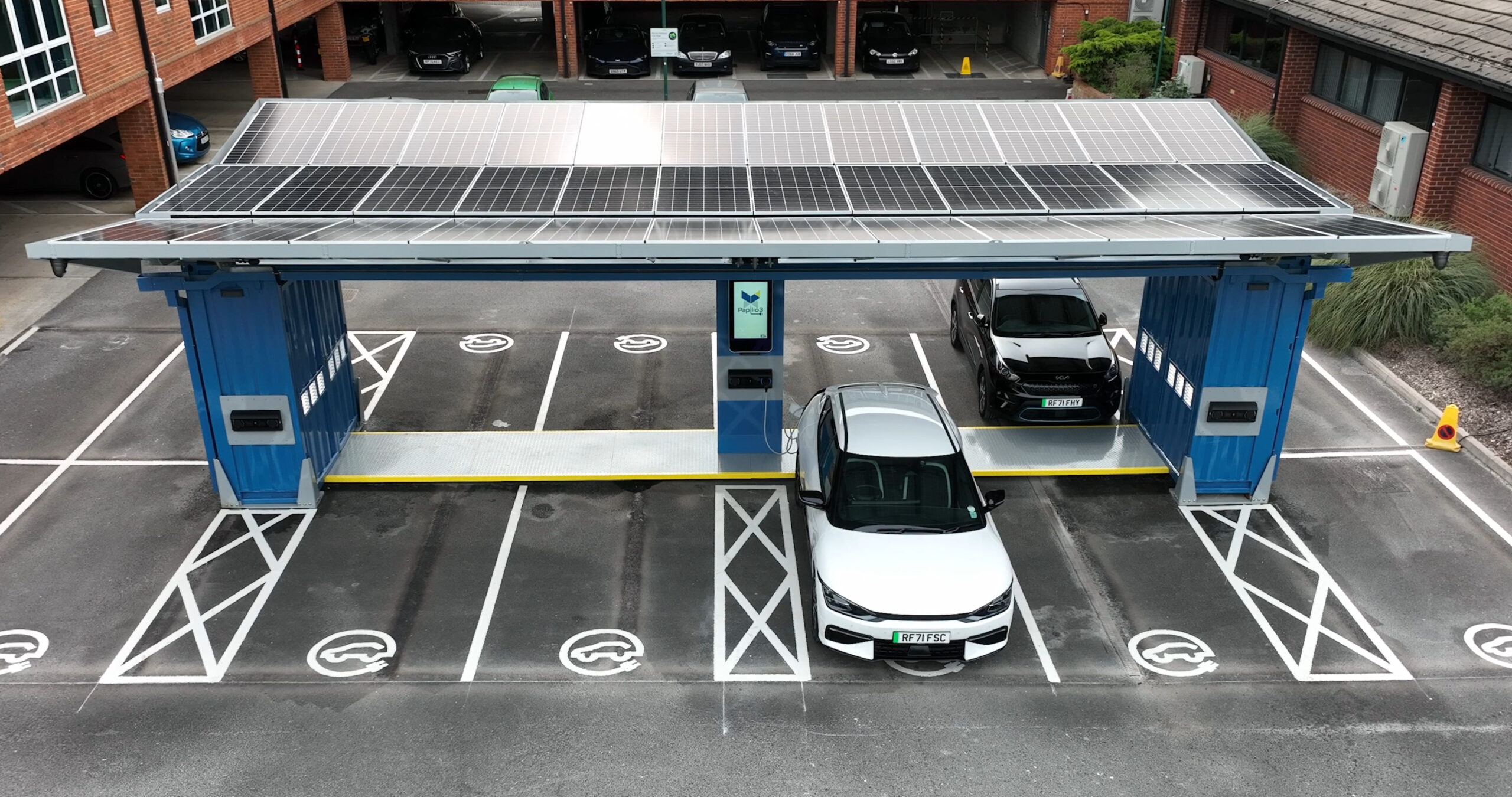Department for Energy Security and Net Zero awards £1.3m to ‘V2X FastHub’ solar car park project to explore ways of resolving issue of intermittent energy supply from renewable sources.
Generating energy from solar or wind can depend on factors such as the weather. What’s more, the times when we can generate most energy, such as in the heat of the summer, can be just when there is least need of energy of heating. Then there are the issues involved in connecting any new energy-generating system to the national grid.

Papilio3 pop-up solar EV charging hub, photo courtesy of 3ti
In short, supply and demand doesn’t always match up, meaning energy produced from renewable sources might not be there when we need it.
One proposed solution is to draw energy from the batteries in electric vehicles (EVs) that are not being otherwise used at the time, effectively turning parked cars into grid assets. Of course, this is more easily said than done but the government is now investing in a project to explore the idea more fully.
The V2X Fasthub project is led by 3ti, a company that designs, installs, funds and operates so-called ‘solar car-parks’. These are ordinary car parks with a canopy of solar panels fitted above parking spaces. The larger the car park, the more energy can be generated – and used not only to power cars parked there, but local buildings and amenities, too.
The new project involves the Papilio3 modular system launched by 3ti in 2022. Manufactured from old shipping containers, Papilio3 can be deployed in just 24 hours, converting 14 car parking spaces into 12 EV charging stations powered by the system’s own solar panels.
In the V2X FastHub project, these Papilio3 systems are to be fitted with bi-directional DC charging and associated power management systems, allowing energy to be supplied to and drawn from EV batteries.
The ambitious project involves a 17-month collaboration involving 3ti and a number of other companies with expertise in the area. This schedule includes a six-month real-world demonstration of its benefits.
3ti is to lead the ambitious project, and will deliver a customised Papilio3 with smart grid controls and a 280 kWh DC battery. Advanced EV power solutions provider Turbo Power Systems (TPS) will harness its DC microgrid systems to manage the bi-directional charging technology through both CCS and CHAdeMO EV charge points. Smart energy company GridBeyond will oversee energy management and aggregation services through its flexible energy management system (EMS). EV & decarbonisation experts Cenex will host the vehicle trial, including the procurement of the trial vehicle fleet, data capture, analysis and final report to Innovate UK.
Mark Potter, CTO at 3ti, says: ‘Everybody wants more EVs on the grid. They represent a massive scale, distributed energy resource that can be used to balance real-time supply and demand. This project will prove that bi-directional EV charging can work in the real world.
‘Connected EVs will be teamed together to act as virtual power and energy storage facilities, with each car releasing and replenishing its stored energy according to user preferences and grid demand. This generates income and cost-savings, which can be passed on to our customers.’
Dr Matthew Knight, Principal Technical Specialist at Cenex, adds: ‘With almost a decade of experience in developing V2X technology, Cenex is excited to bring a novel concept to life in this space. We’re creating pre-fabricated hub solutions that integrate renewable generation, energy storage, and the latest bidirectional EV charging technology to maximise energy use and value while reducing emissions.’
In related news:
SUVs ‘massively’ undermine efforts to decarbonise transport, says report













Leave a Reply